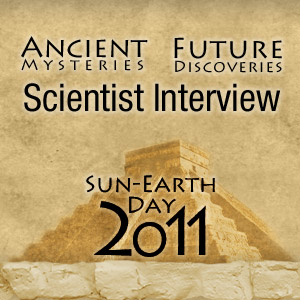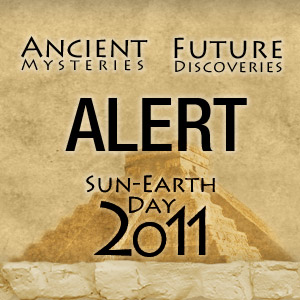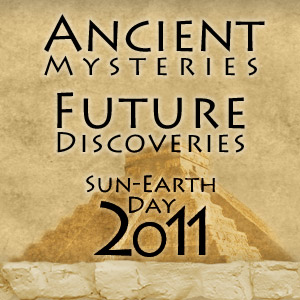Discover NASA's Sun-Earth Day
NASA's Sun-Earth Day

NASA's Sun-Earth Day
Author: NASA's Sun-Earth Connection Education Forum
Subscribed: 50Played: 148Subscribe
Share
© 2005 National Aeronautics and Space Administration. Commercial use prohibited. All other users must give proper credit.
Description
Prepare for an international celebration of our Sun's domain! This year's theme: Ancient Mysteries, Future Discoveries opens the door to a much deeper understanding of our Sun and its impact across the ages. Join us at http://sunearthday.nasa.gov/ or on Facebook.
68 Episodes
Reverse
In today's podcast we'll be hearing from Dr. Sten Odenwald. Sten is the chief author and editor of the Technology Through Time series. Sten is going to fill us in on this year's first Technology Through Time mystery, "Why is the Sun's Corona So Hot?"
"Space Weather Living History" interview with Madhulika Guhathakurta.
"Space Weather Living History" interview with Jim Green.
"Space Weather Living History" interview with Dick Fisher.
"Space Weather Living History" interview at IHY with Joe Davila, Nat Gopalswami and Barbara Thompson.
This is the first of our new "Space Weather Living History" Podcast series. We kick this new series off with an interview of David Hathaway, a solar astronomer at NASA's Marshall Space Flight Center.
In this podcast, we'll continue our series about the RHESSI mission with Dr. Nicole Vilmer, the Director of Scientific Research at CNRS which is the National Center of Scientific Research at the Paris Observatory. It takes the concerted efforts of scientists and engineers from a variety of backgrounds and cultures to make missions like RHESSi successful.
In this podcast, we'll continue our series about the RHESSI mission with Dr. Lyndsay Fletcher. Dr. Fletcher is a solar physicist who holds a faculty position at the University of Glasgow in Scotland.
In this podcast, we'll continue our series about the RHESSI mission with Dr. Gordon Emslie. Gordon is on the physics astronomy faculty at Western Kentucky University in Bowling Green Kentucky. The thrust of the bulk of his research for the last 30 years or so has been the study of energy release and transport in solar flares...
In this podcast, we continue our IBEX mission series by interviewing Jacob Heerikhuisen, an assistant professor at the University of Huntsville in Alabama From an earlier podcast, you may remember that IBEX maps faint magnetic fields out in space by capturing images of neutral atoms that result from particle collisions along those magnetic fields.
In this podcast, we'll continue our series with the IBEX mission by talking to Stephen Fuselier at Lockheed Martin. IBEX maps the faint magnetic fields out in space by capturing images of neutral atoms that result from particle collisions along those magnetic fields. At a recent American Geophysical Union meeting, Fuselier told us how science can only be done well when researchers work together.
Today on the Sun Earth Day podcast we're talking to Barry Mauk who is a scientist who works at the Johns Hopkins University Applied Physics Lab. This lab is one of many throughout the world that help build instruments and spacecraft for NASA missions.
David Smith is a physicist at the University of California at Berkeley, and he uses a solar mission called RHESSI to study the dynamics of lightning in the clouds over Earth. I was able to talk with Smith at the 10th RHESSI workshop.
In today's sun-earth day podcast we talk to Bob Lin who is an astrophysicist at the University of California, Berkeley who says that solar flares send out more than just energy.
In today's podcast we will hear from 2 astrophysicists at NASAs Goddard Space Flight Center, Brian Dennis and Gordon Holman from the RHESSI spacecraft
David Young is a physicist at Southwest Research Institute who has spent his whole career working on missions like the upcoming Magnetic Multiscale Mission, or MMS, to study what scientists call plasma.
In today's podcast we'll hear from 2 NASA scientists who work directly with a spacecraft called IBEX.
The two satellites known as the STEREO mission are moving into a very exciting position around the Sun on Feb 6th.
Join us for today's podcast as we interview Roy Torbert, and learn about the instruments aboard the MMS mission.
In today's podcast we will hear from Tom Moore, the Project Scientist for the MMS Mission.
Comments
 United States
United States








